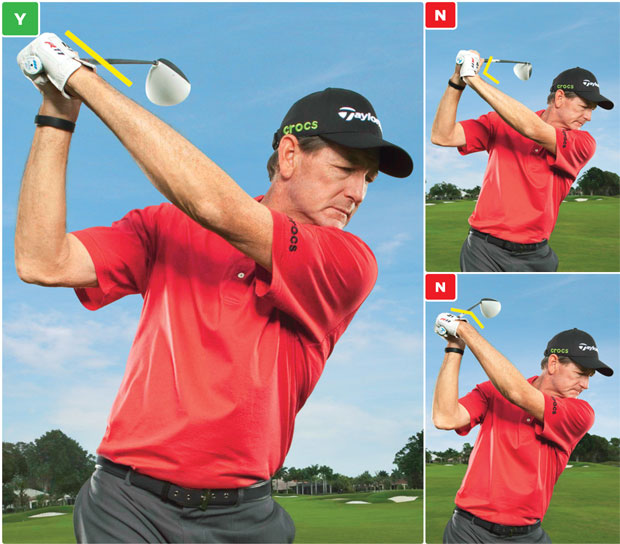You will never lower your scores until you master your Mind Control. There are 3 areas of Mind Control that you need to apply when you play golf: Memory, Mental Distractions and Focus. Golf is a very simple game if you could only APPLY your mind to control the PERFECT OUTCOME for your game.
Unfortunately we are not all professionals so our memory tends to forget to execute our most successful swing sequence with each club. We also let our mind get distracted as we think about a pain in our body or distracting comments by our playing partners. And the worst mind control problem is letting our mind think about the glory of success or the impact of failure instead of focusing on the execution of your most important shot: YOUR NEXT SHOT.
1. Memory of the Motion to Execute Each Type of Shot
After you discover the swing skills that work for your game for every club, you need to WRITE THEM DOWN (and don’t forget them). Learn to use those thoughts for each club in your bag. Control your mind to only think about the setup, stance, take-away, impact and cadence that works for your body. Forgetting to slow down your backswing or forgetting to shallow your backswing with a flat leading wrist or forgetting to finish your swing in balance can all be critical for your successful swing.
You should know (and write down) the single most important thought for your drives, fairway shots, chips, sand trap shots and putts (both long and short). Your notes and mental queues are the keys for every successful round of golf.
2. Ignore External Distractions
Our minds are mysterious animals. They seem to be looking for anything to change our attention from your primary interest. Abnormal noises like a bird chirping or a passing vehicle may cause a momentary distraction but comments from a playing partner often have longer lasting impacts. Even a comment like “Take your time!” can echo in your mind with a whole train of thoughts like “Wouldn’t you like to see me miss this putt?” or “I wonder how many shots I’m behind.” It’s up to you to first recognize this problem and then refocus your mind back on your calm and relaxed swing.

3. Focus on Your Perfect Swing
Your mind may be focused on your swing but the longer you take to execute your shot, the greater the chance you will flip to thoughts of your past failures or the reaction to the outcome of your shot. Your attention has to be on your target and how you get your ball to travel there. After you setup with the perfect grip and stance on your target line, you need to work back from your target to your relaxed grip and the controlled cadence for your perfect swing.
The chances of nervous tension and failure build when you think beyond your primary swing thought. My key thought is to slow down my backswing to give me more time to complete it with a flat leading wrist lag at the top. I internally saying the words “1 and 2” where 2 is the start of my downswing.
Greg Norman said that Jack Nicklaus give him the best tip that he ever received: “Be conscious of your grip pressure.” Ernie Els said that “tight muscles move slower than loose ones.” So remove your tension with a relaxed grip. They all got it right.
You will be a better golfer if you memorize a list of your success factors, ignore distractions and focus on the swing to hit your target line. Tiger was a master of moving his brain into his SWING ZONE. You can too! Practice with GOLFSTR+ for your Mind Control. Buy one today at www.GOLFSTR.com
Golf Truism #73: A golf match is a test of your skill against your opponent’s luck.





